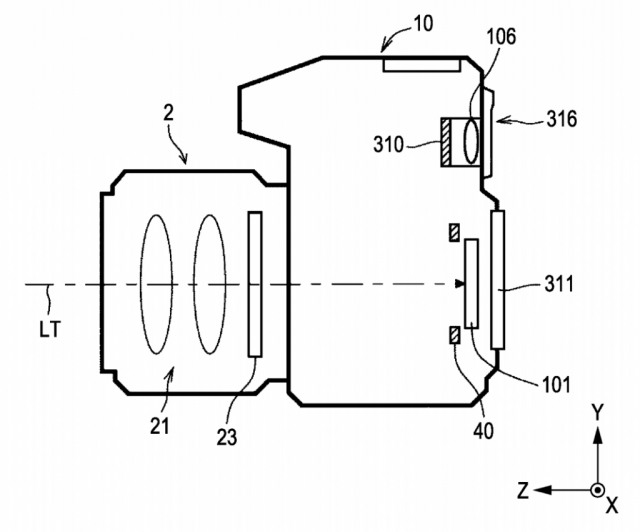
The rumors have been out there for a while – Sony is done with the Translucent Mirror Technology and going full mirrorless in its Alpha A-mount cameras. As impressive as the Sony A77 and A99 have been, they may very well be a dying breed in the Sony Alpha lineup. A recently published patent application seems to offer solid support for these rumors as well.
By removing the mirror from the DSLR-style body, Sony will be freed up to do a lot more (or less) with the form factor of its Alpha A-mount cameras. All autofocus appears that it will be handled on the main sensor.
This means Sony will effectively have two mirrorless systems – just using different mounts. The old Minolta mount carried over from the purchase of Konica Minolta’s camera operations, and the new NEX mount that was built in-house by Sony.
Sony is rumored to announce both full frame and APS-C format A-mount cameras with this new mirrorless design in early 2014 – perhaps at CES 2014.
[FreePatentsOnline via SAR]


Not really all of them. Just an APS-C cameras. According to SAR the A99 hardly is a dying breed. On-sensor AF isn’t good enough for professional photography.
The translucent mirror concept was tried by Canon in their Pellix SLR way back in the 60’s, and it had failed to take off. I’m surprised that Sony should have even thought of this for their DSLRs. If light transmitted by the lens is split two ways, one for viewing and the other for recording, it stands to reason that each function will receive less than 100% light, which is unacceptable for either of the two functions.
Technology changes a lot of things in the last 40 years. In the 60’s, people listen to playback music thru 8-track tapes or plastic records, not to mention the size of the devices to play them. Now, even little kids could listen to music in a less perfect sound format, MP3, on their little mobile devices. Although sound quality in MP3 format is not as good as in MD, CD, nor records, it works and it works well enough for the majority. Same to the translucent mirror technology, it did not work with Canon, but it works well enough with Sony, especially in continuous focusing for video shooting. There is of course drawback in 1/3 stop of light loss to the sensor, that is the reason Sony decides not to keep that concept further, but to go fully mirrorless.